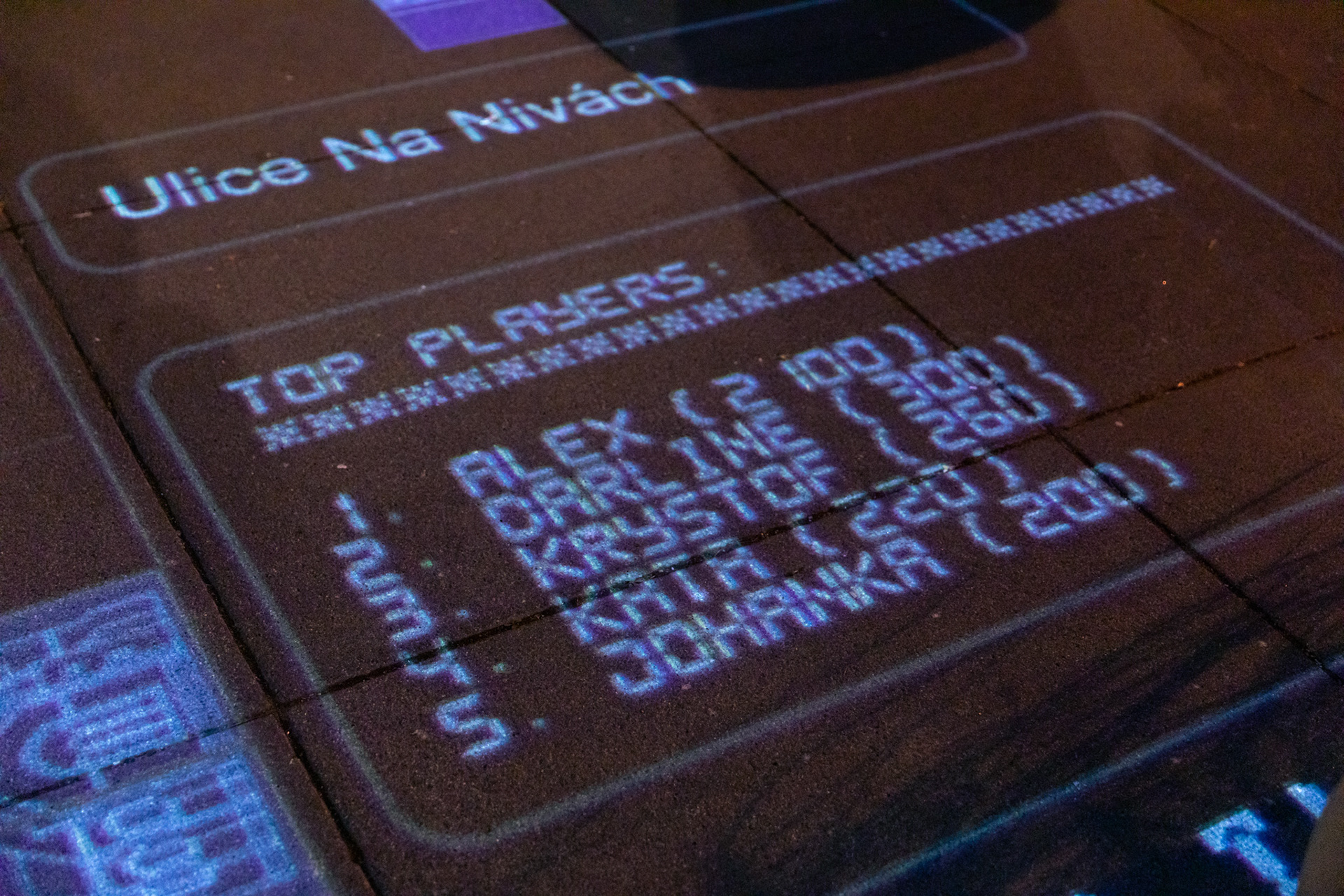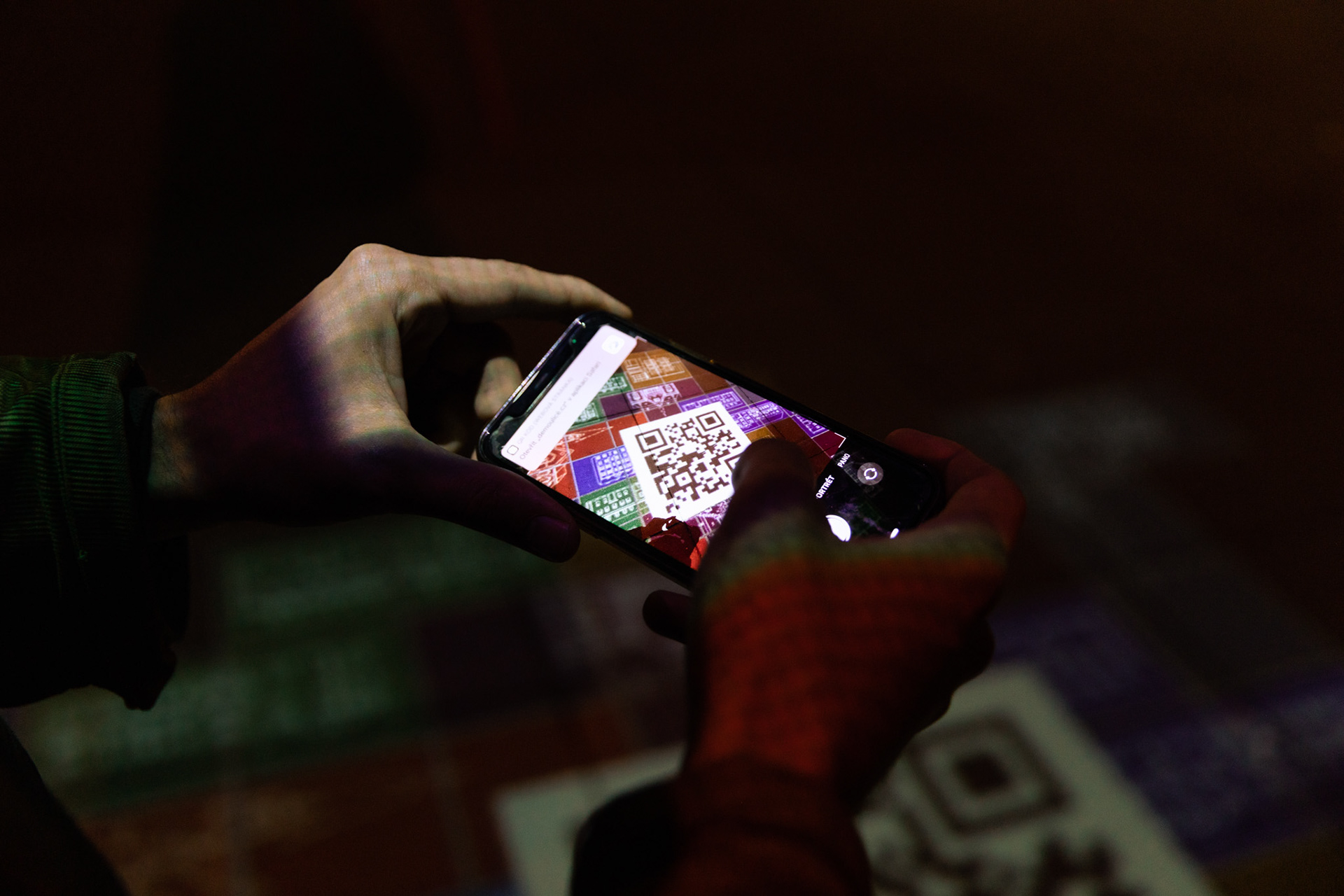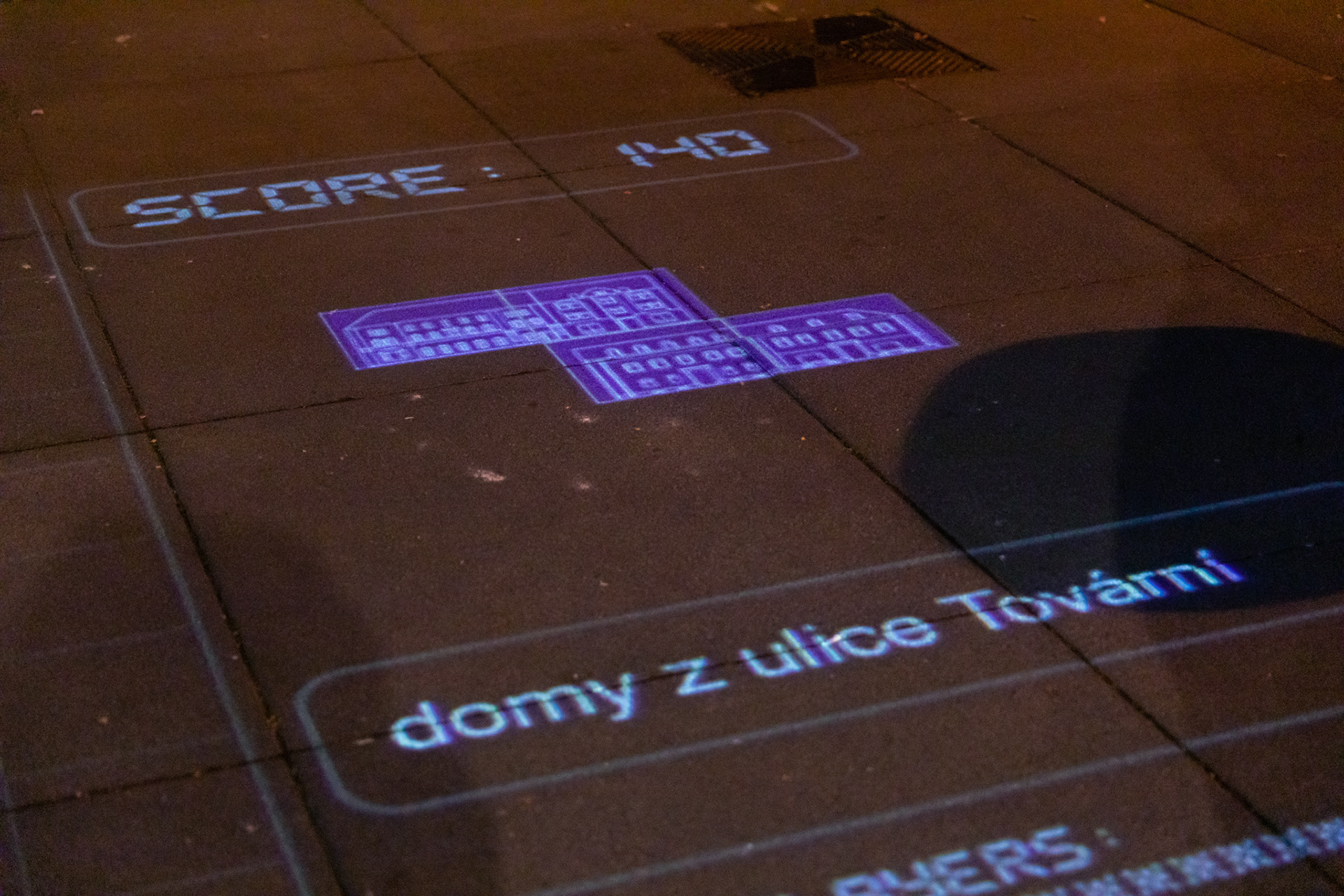cz/
Demo(u)lice
interaktivní videoprojekce
interaktivní videoprojekce
Interaktivní projekce Demo(u)lice reaguje na nechvalně proslulou asanaci historického jádra města Ústí nad Labem, jež probíhala v 70. a 80. letech 20. století. Dne 23. února 1980 bylo srovnáno se zemí naráz rekordních devatenáct budov v rámci druhé etapy odstřelu bloku obytných činžáků a vil mezi Masarykovou a Churchillovou ulicí. Historické budovy tak uvolnily místo pro stavbu nevzhledných paneláků, nákupního střediska či objektu tehdejšího hotelu Vladimír.
Zmiňovanou demolici historické části města s nadsázkou přenášíme do prostředí počítačové hry Tetris, ve které je patrný princip budování a následné demolice za účelem výstavby dalších objektů. Stále nové a nové herní bloky jsou skládány do jedné řady a poté odstraněny a nahrazeny dalšími. Nekonečný cyklus herních dílků, nad kterými vítězíme pouze jejich destrukcí, je tomu však stejně i s historickými stavbami? Bylo výhrou se jich zbavit a vystavět budovy nové, “lepší” v duchu tehdejšího režimu?
Nejen stavby padlé 23. února 1980 se staly herními objekty legendární hry Tetris, ve které se jich můžete paradoxně opět zbavit, abyste vyhráli. Nebo naopak máte v této hře možnost objetovat vaše vítězství a pomyslně vystavět novou část Ústí nad Labem z budov, které v ulicích města již nespatříte.
Nejen stavby padlé 23. února 1980 se staly herními objekty legendární hry Tetris, ve které se jich můžete paradoxně opět zbavit, abyste vyhráli. Nebo naopak máte v této hře možnost objetovat vaše vítězství a pomyslně vystavět novou část Ústí nad Labem z budov, které v ulicích města již nespatříte.
en/
Demo(u)lice
interactive video projection
interactive video projection
The interactive projection Demo(u)lice responds to the infamous redevelopment of the historic city center of Ústí nad Labem, which took place in the 1970s and 1980s. On 23 February 1980, a record nineteen buildings were razed to the ground at once as part of the second stage of the demolition of the apartment The historic buildings made way for the construction of unsightly apartment blocks, a shopping mall, or the building of the then Hotel Vladimír.
The mentioned demolition of the historic part of the city is exaggeratedly transferred to the environment of the computer game Tetris, in which the principle of building and then demolishing in order to construct new buildings is evident. New and new game blocks are stacked in a row and then removed and replaced by others. An endless cycle of game pieces that we only win over by destroying them, but is it the same with historical buildings? Was it a victory to get rid of them and build new, "better" buildings in the spirit of the regime of the time? It is not only the buildings that fell on 23 February 1980 that have become game objects in the legendary game of Tetris, in which, paradoxically, you can also again get rid of them in order to win. Or, on the contrary, in this game, you have the opportunity to embrace your victory and imaginatively build a new part of Ústí nad Labem out of buildings that you no longer see in the city streets


